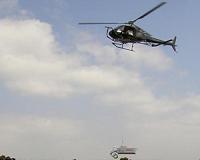 |
Tokyo (AFP) May 21, 2010 A Japanese rocket blasted off early Friday and successfully launched a Venus probe and a kite-shaped "space yacht" designed to float through the cosmos using only the power of the sun. The launch vehicle, the H-IIA rocket, took off from the Tanegashima space centre in southern Japan on schedule at 6:58 am (Thursday 2158 GMT), three days after its original launch was postponed by bad weather. Live footage on the website of the Japan Aerospace Exploration Agency (JAXA) showed the rocket disappear into the sky. "It was an almost perfect launch," Teruaki Kawai, a space business manager with the rocket's manufacturer, Mitsubishi Heavy Industries, told a televised press conference from the island of Tanegashima. It was the 11th straight launch success for the H-IIA, Japan's primary space vehicle, after a rocket was forced to self-destruct after blastoff in 2003 when one of its boosters failed to disengage from the main body. The rocket Friday carried the experimental "Ikaros" -- an acronym for Interplanetary Kite-craft Accelerated by Radiation of the Sun -- designed to be propelled by the pressure of sunlight particles. Similar to an ocean yacht pushed by wind, the device has a square, ultra-thin and flexible sail, measuring 14 by 14 metres (46 by 46 feet), that will be driven through space as it is pelted by solar particles. The sail, only a fraction of the thickness of a human hair, is also partly coated with thin-film solar cells to generate electricity. The name of the spacecraft alludes to Icarus, the figure from Greek mythology who flew too close to the sun. The space yacht, however, is headed in the direction of Venus. Ikaros, which cost 1.5 billion yen (16 million dollars) to develop, will be the first use of the propellant-free technology in deep space, although it has been tested in orbit around the Earth before. "This idea of a solar sail was born some 100 years ago, as we often find it in science fiction novels, but it has not been realised to date," JAXA says on its website. "If we can verify this navigation technology through the Ikaros, it will mark the first spectacular achievement of its kind in the world." The rocket also released the Planet-C Venus Climate Orbiter, nicknamed Akatsuki, which means "Dawn" in Japanese. Japan's first Venus probe is a box-shaped golden satellite, fitted with two paddle-shaped solar panels, that is set to arrive at Venus in about six months. "I'm full of joy after the probe was put into the right orbit," Masato Nakamura, the JAXA chief scientist in charge of Akatsuki development, said at the press conference. "My heart is beating, thinking of what's ahead." Venus is similar in size and age to Earth but has a far more hostile climate, with temperatures around 460 degrees Celsius (860 degrees Fahrenheit) and large amounts of carbon dioxide, the primary greenhouse gas on Earth. Scientists believe a probe of the climate of Venus will help them deepen their understanding of the formation of the Earth's environment and its future. The probe will work closely with the European Space Agency's Venus Express. Fitted with five cameras, its mission is to peer through the planet's thick layer of sulphuric acid clouds to monitor the meteorology of Venus, search for possible lightning, and scan its crust for active volcanoes. It will observe the planet in an elliptical orbit, from a distance of between 300 and 80,000 kilometres (200 to 50,000 miles). The Japanese rocket also released four other small satellites, developed by Japanese universities and other institutions.
Share This Article With Planet Earth
Related Links Space Tourism, Space Transport and Space Exploration News
 Helicopter Helps Test Radar For 2012 Mars Landing
Helicopter Helps Test Radar For 2012 Mars LandingPasadena CA (JPL) Apr 14, 2010 This spring, engineers are testing a radar system that will serve during the next landing on Mars. Recent tests included some near Lancaster, Calif., against a backdrop of blooming California poppy fields. In those tests, a helicopter carried an engineering test model of the landing radar for NASA's Mars Science Laboratory on prescribed descent paths. The descents at different angles and f ... read more |
|
| The content herein, unless otherwise known to be public domain, are Copyright 1995-2010 - SpaceDaily. AFP and UPI Wire Stories are copyright Agence France-Presse and United Press International. ESA Portal Reports are copyright European Space Agency. All NASA sourced material is public domain. Additional copyrights may apply in whole or part to other bona fide parties. Advertising does not imply endorsement,agreement or approval of any opinions, statements or information provided by SpaceDaily on any Web page published or hosted by SpaceDaily. Privacy Statement |